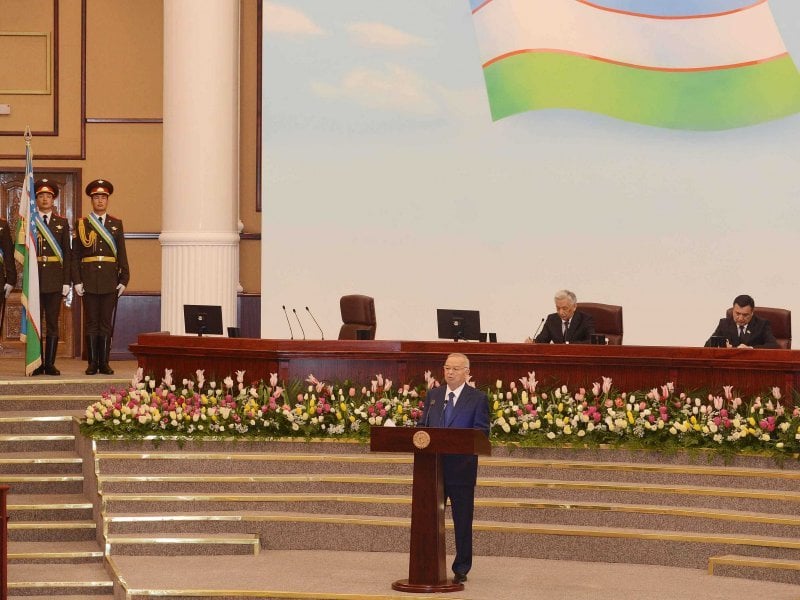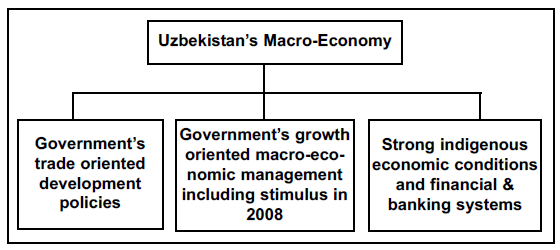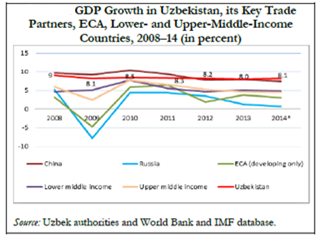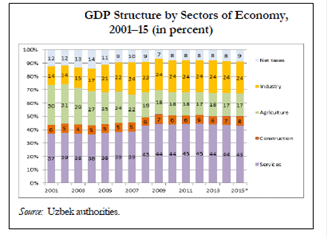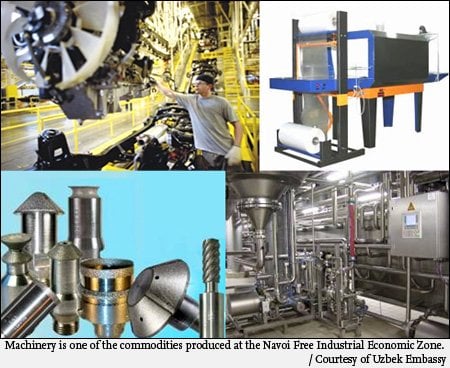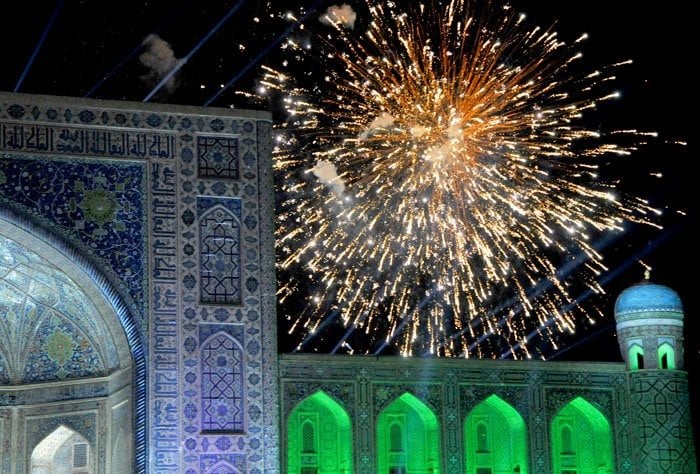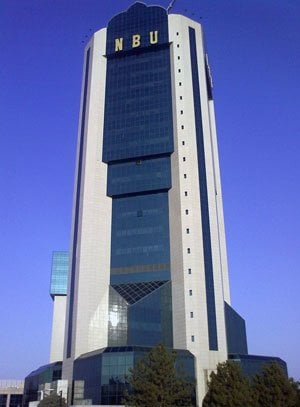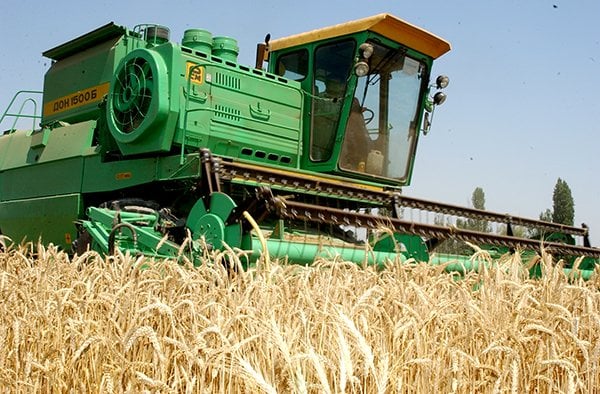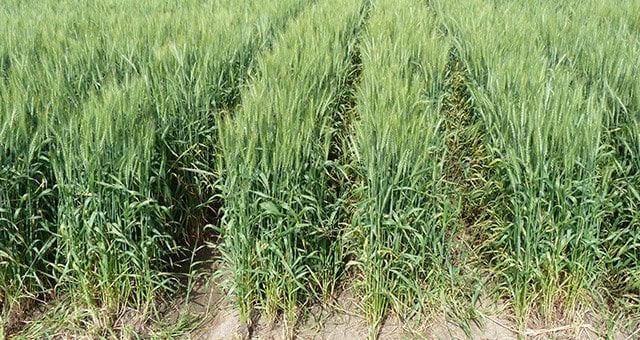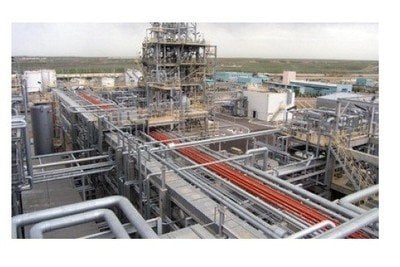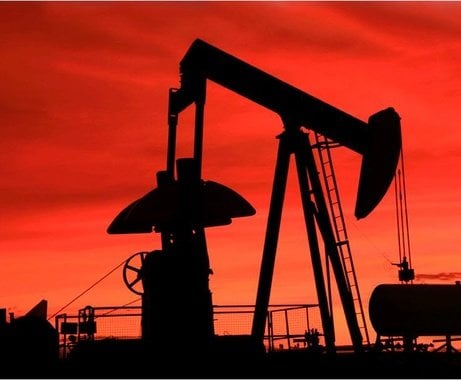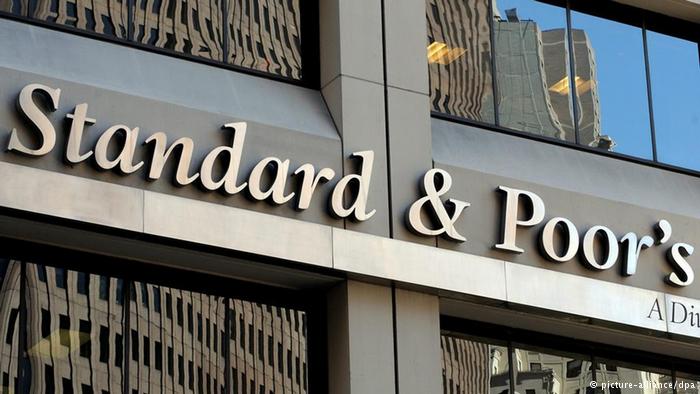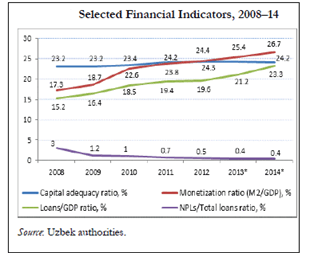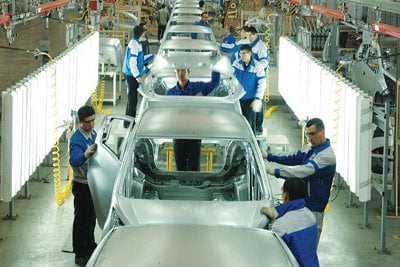Mehmood Ul Hassan Khan
Change is obvious. Change is permanent. Change is real. The Republic of Uzbekistan has achieved high rates of economic growth and social development because of its rigorous economic, financial and social reforms. Strategic planning, visionary leadership and its unique economic development model played important part in the continuous upward socio-economic development of Uzbekistan.
Change brought better economic monitoring system which was previously functioned in command system. Change brought greater participation in the decision making through massive politicization process throughout the country. Gradual process of democratization brought rule of the law, concept of separation of power, accountability, corporate governance and the last but not the least, rise to people’s free will and choice. Change also protected basic human rights, civil liberties, associations and above all mushroom growth of the mass media outlets and development of civil society in the country which created strategic balance between power corridor and people at large.
Change has successfully transformed people’s mentality, attitude and of course ability. It has brought spirits of tolerance, harmony and peace among the different factions of the society. It has created system of governance where people feel proud to live in. Today, over 130 nationalities live peacefully together in Uzbekistan. Due to which Uzbekistan has become the land of wonders, peace and harmony.
Change institutionalized momentum of economic growth through the introduction and implementation of reforms. People remained supreme over production and profit. People were not made scapegoats in the chase of high GDPs. National identity was enacted over massive industrialization. Family unit kept sky-high as compare to field and factory in the country. National politics remained holy as compare to personal gains which made it most competitive country among the CIS.
Series of economic liberalization, privatization, free market application and pursuit of financial profitability did not disturb the people’s traditions and native customs. That is why Uzbekistan is now among the few countries in the world where economic growth has very close correlation with social development. Declining poverty rations, high enrollments in the centers of learning, better health care and the last but not the least, housing all reflect and confirm the “Change” in the Uzbekistan which is positive, supportive and dignified.
Change may also be witnessed in the infrastructure sector. Now, country-wide networks of new roads, means of communication, state-of-the hospitals, universities, colleges and centers of art show the power of Uzbekistan. Now, Uzbekistan is full of symbols, semantics and sentiments of change and socio-economic growth.
Uzbekistan is on the way of economic, social, and environmental sustainability. It is hoped that multi-sectoral activity will also identify the policy and institutional reforms on macroeconomic management and trade policy, infrastructure and connectivity, business environment and enterprise reform, labor markets, water, and energy that will have the biggest impact on growth and job creation, while mitigating risks.
The Republic of Uzbekistan celebrates its 24th National Day on September 2 every year. It has been great socio-economic transformation since its inception. Its economy, politics, projects and the last but not the least governance model has been revolutionized the fate of its people. There are hundreds of kilometers of reconstructed roads and railways, erected new houses, industrial and social facilities. These figures indicate the success of the national development strategy. Mustaqillik bayramingiz muborak bo’lsin!
Rigorous Reforms
Uzbekistan can be proud of the reforms it has taken to reflect the challenges of today’s increasingly connected globalized world. The fast rail connection between Tashkent and Samarkand, advances in information technology (IT) and excel in education recognize that progress in these areas are examples of solid achievements in Uzbekistan during 24 years. Moreover, democracy is a process which is rigorously followed in Uzbekistan in its true letters and spirits.
Different Stages of Reforms Highlights
Stage I (1992 & 1994) The Government instituted a series of reforms aimed at gradually liberalizing prices, unifying foreign exchange markets, instituting new taxes, lowering import tariffs, and privatizing small shops and residential housing.
Stage II (1995-1996) It launched a comprehensive stabilization and structural reform program aimed at promoting economic stabilization rather than growth. Other policies included efforts to subsidize employment, control prices of essential goods, gradually privatize large enterprises, and attain self-sufficiency in energy and food supplies.
Stage III (1997-2000) It instituted a multiple currency exchange rate system and embarked upon an import substitution program that included restrictions on current account transactions with direct import controls. These measures allowed the Government to conserve foreign exchange reserves.
Stage IV (2001-02) It elaborated a Staff Monitored Program (SMP) with the International Monetary Fund (IMF) in an effort to stabilize the economy and accelerate the transition to a market economy. Tightened monetary and fiscal policy and improved access to the foreign exchange market that reduced inflation to fewer than 30 percent.
Stage V (2003-2004) It further strengthened market reforms especially in banking reforms.
Source: Different Research Papers of IMF & World Bank
The following table shows that the different stages of reforms successfully revolutionized its macro-economy which is still going higher and higher by each passing day.
Macro-Economic Indicators of Uzbekistan (2008-2011)
2008 2009 2010 2011 2011E
GDP % 9 8.1 8.5 8.3 8.0
GDP per Capita US$ 1048 1205 1377 1545 1823
Gross Investments 24 26 25 24 25
Current A/C Balance 8.7 2.2 6.2 5.8 4.5
Fiscal Balance 10.7 2.8 4.9 5.9 3.6
FDI (net) million US$ 711 838 1628 1418 1410
Source: Uzbekistan’s Central Bank
Achievements of Macro-Economy
Uzbekistan in recent 10 years is an extremely successful economy high growth 8 percent, low domestic and international debt, undervalued exchange rate, relatively even distribution of income, creation from scratch competitive export oriented auto industry.
Uzbekistan’s Key Economic Indicators (2011-2015)
2011 2012 2013 2014 2015
GDP % 8.3 8.2 8.0 8.1 7.8
GDP per Capita US$ 1,545 1719 1878 2038 2146
Gross Investments 23.5 22.8 23.2 23.3 26.1
Current A/C Balance 5.8 1.2 1.9 2.6 2.7
Fiscal Balance 8.8 5.1 3.8 2.6 2.5
FDI (net) 3.6 1.7 1.7 1.0 1.p
Source: Uzbekistan’s Central Bank
According to World Bank (2014-15) the GDP in Uzbekistan was worth 62.64 billion US dollars in 2014. GDP in Uzbekistan averaged 22.68 USD Billion from 1990 until 2014, reaching an all time high of 62.64 USD Billion in 2014 and a record low of 9.69 USD Billion in 2002.
Complete Transformation
Right from the beginning the Republic of Uzbekistan followed a different agenda of development. It was based on gradual economic liberalization, avoiding abrupt jumps and perturbations, implementation of the strategic development program having special focus not on high GDP and industrial production rates, but on the people and their immediate needs (massive social development/transformation). As a result, the nation was rankd among the “Best” among the CIS in terms of growth rates.
Over the years of independence the economy has grown more than 4.1 times, the real incomes of the population have multiplied 8.2 times. The GDP growth rates have been at least 8 percent over the past nine years. Moreover, the public external debt of the country never reached beyond to 16 percent of the GDP, while the internal debt has a zero valuation, amid the mounting volumes of exports and gold and currency reserves. It attracted more than US$ 56 billion of FDIs. The volume of capital investments in 2013 is to make up US$14 billion, which is 23 percent of the GDP.
The above given diagram, clearly shows that the available fiscal space enables the Uzbek Government to continue financing fiscal stimulus programs without increasing public debt. Fiscal policy in 2015-16 is likely to remain unchanged, given the further reduction of direct taxes on firms and employees, the increase in indirect taxes on resources, the increasing public investment trend, and a continued focus on social spending.
Its remarkable success is based on a robust social policy, which ensures a stability of the middle class an important factor in the stability and progression of the country. Sincere efforts for the development of qualitative human resource development are now paying its dividends. It is now rate the best in terms of education, technical education, health and housing among the CIS.
Social Development
The pace of social development has been phenomenal. Economic growth has been remarkable and surpassed all the regional countries in so many interrelated fields of production and survival. Visionary leadership of H.E. Islam Kairmov successfully changed the destiny of its country and people alike. It has been infinite voyage of change (from old system of totalitarianism to devolution of power, gradual democratization, political & constitutional development). It has been institutionalization of gradual liberalization of economic policies and projects. It has been national drive of market freedom, privatization, qualitative education, health and housing etc. Now Uzbekistan is an incredible country all respects. New one million jobs were created, 60 per cent of them in rural municipalities, and over 600,000 recent graduates found employment in the previous year.
The average life expectancy has increased by 7.5 years (from 66 years to 73.5 years for men while women’s life expectancy has risen to 75 years); the proportion of children with low body weight has decreased more than twofold (from 4 percent to 1.8 percent), and their average height increased by 3 centimeters (1.2 inches); agricultural production has increased twofold in the last 20 years, while grain production has increased from 1 million tons to 7.8 million tons, turning the country into an exporter of wheat; and the last but not the least, land for cotton production has been halved and the freed space given to food crops.
World Bank Report (2015)
According to World Bank report (2015), despite a generally subdued performance in the developing Europe and Central Asia (ECA) region, Uzbekistan continues to grow strongly. In 2014, output expanded by 8.1 percent, slightly higher than the 8 percent growth rate registered in 2013. With this, real GDP growth averaged 8.3 percent per annum between 2008 and 2014, making Uzbekistan one of the fastest growing economies in the ECA region.
Sectoral Development (2014-15)
During 2014, construction expanded by 18.3 percent, services by 15.4 percent, agriculture by 6.9 percent, and industry by 5.7 percent. On the demand side, private consumption rose after a 20 percent nominal increase in minimum wages, pensions, and social allowances. The prospect of high GDP (7.6 percent to 8.1 percent) is expected during 2015 too.
People & Business”s Friendly Policies
Rigorous economic development has been one the foremost national and strategic priority of the government due to which right from the beginning the President Islam Kairmov introduced many short and long term reforms in the country. Obsolete administration has been changed into the best people friendly. Command system has been refined to contributory and community based. Planned distribution has been changed into price oriented and supply-demand. It consolidated its weak economy and achieved macroeconomic stability.
Declining Poverty Ratios
Due to rigorous social development poverty declined from 27.5 percent of the population in 2001 to 14.1 percent in 2013 and is expected to have declined further to 13.7 percent in 2014.3 These declines were due to rapid per capita economic growth, sustained annual increases in salaries and remittances, incomes from micro and small businesses, and the Government’s targeted support programs. In 2002-13, per capita GDP grew 197 percent and poverty declined by 48.7 percent.
Every year, the Government adopts additional social programs targeted to particular vulnerable sections of the society which ultimately reduced the incidents of poverty.
According to World Bank Report (2015), public capital spending remained stable at 4.2 percent of GDP in 2013 and increased to 4.5 percent of GDP in 2014. Public spending on health at 3.1 percent of GDP in 2014 was much higher than the average 1.7 percent of GDP in lower-middle-income countries. Public spending on education at 7.5 percent of GDP in 2014 was the highest in the Central Asia and Caucasus region and on par with Organisation of Economic Co-operation and Development (OECD).
Rapid Industrialization
Rapid industrialization and resilient banking system played significant role in the constant upward economic development of the country. It did not sacrifice its people’s wish and whims for the sake of industrial production and kept a strategic balance between the economic and financial reforms and traditions and customs. Resultant there has never been chaos or political uncertainty in the country.
Economic stability further strengthened the pace of politicization process and ultimately democracy flourished. Regular conduction of presidential, parliamentary and local elections all speak about the stability of the Uzbek system and unblemished will of its visionary leader H.E. Islam Kairmov. The President Islam declared the need to tackle the debacle of macro-economy as soon as possible problem as soon as possible during its speech to the 10th session of the Oliy Kengash (Supreme Council) of the Republic of Uzbekistan of the 12th convocation in July 1992.
In recent years Uzbekistan promotes heavy chemistry industries (production of synthetic fuel and polypropylene goods from natural gas). This is the next stage of industrial policy after reaching food and energy self-sufficiency and successful auto industry development.
The Government’s industrialization policies are now contributing to changes in the structure of Uzbekistan’s economy. While services continued to dominate the economy at 44 percent of GDP in 2014, the share of industry has increased by around 10 percentage points of GDP over the past decade and at 24.1 percent of GDP now exceeds that of agriculture 17.2 percent.
Pace and Bounties of Industrialization
Initially, introduction of a national currency and complete overhauling of its sick industrial units were the main worries of Uzbek government. Most of the industries were at their lowest ebbs of production and efficiency. Industries were not price based and resultant was uncompetitive orientation in the national as well as regional markets. Largest production units and businesses became irreverent and solvent. Fears of shortage of even basic necessities of life were very high and real throughout the country. Strategic planning and people’s friendly policies of the Islam Kairmov rescued the country from all the hardships and put it on the way of greater socio-economic prosperity.
Export-Oriented Policies
Revival of import-substituting and export-oriented goods based industries were the main priorities of the government. Within very short span of time, people’s friendly agricultural and industrial policies and programs achieved and ensured food self-reliance in Uzbekistan. It was the first giant step towards greater realization of self-reliance among the people which encouraged them to work harder to achieve their desired goals of socio-economic prosperity.
Food Security & Self-reliance
In the early 1990s, the import bill of flour and other food items/commodities required an average of $900 million annually. Now, there is a paradigm shift. The demands of the domestic market are met by the domestically produced foods by 96 percent. According to national figures due to self-reliance of food items the consumption of meat per capita increased by 1.3 times, milk and dairy products by 1.6 times, and processed fruit and vegetables by almost 4 times.
Now agriculture sector plays an important role in Uzbekistan’s economy and contributed over 17 percent of the national GDP and 26 percent of employment in 2014. More importantly, about 49 percent of the population live in rural areas and depend on agriculture and related activities for their livelihoods.
Central Bank of Uzbekistan (CBU) continues monetary tightening by absorbing excess liquidity, exercising stricter controls over payments, promoting non-cash payments via more debit cards issued to individuals, encouraging self-sufficiency in food by increasing food production and improving rural infrastructure, and reducing excise taxes on some imported food (e.g., vegetable oil).
Diversification of Exports
Due to its exports oriented policies as of so many advanced economies like (Japan, China, Germany, Brazil etc.) its exports now dispatch to more than 80 countries which was confined to five countries during the 90s. It introduced diversification in its traditional and non-traditional exports mix. Now exports of fruit juice have been doubled, and food products increased an average of 1.5 times over the last decade.
Main Indicators of National Economy
According to World Bank report (2015), current account surpluses over the past decade have translated into rapidly falling indebtedness, with external debt also declining rapidly from 64 percent of GDP in 2001 to around 17 percent of GDP in 2012-14. External debt has been serviced comfortably, and the debt service ratio was around 5 percent of exports in 2012-14. Uzbekistan remains a net creditor to the world despite its massive capital needs, with foreign assets at more than 14 months of imports of goods and services in 2014.
Knowledge Based Economy
The government introduced concept of knowledge based economy which geared the momentum of industrial production. It transformed farmers with greater scientific knowledge along with modern equipment. Introduction of modern methods of farming and establishment of technologically advanced processing plants and cold stores for the preservation of consumer properties of the foods grown drastically changed the shape, size and supply channels of agro-economy in the country.
The immense development in the fields of small business and private entrepreneurship has changed the fates of people. The share of GDP attributable to small business has grown from 31 to 56 per cent since 2000, while its share of industrial production has increased from 12.9 to 31.1 per cent. It employs 75-77 percent of all the workforce of the nation. The share of GDP represented by services sector increased from 53 to 54 per cent. Among high technology services, the fastest development has been seen in communications and information technology services, which have grown 3.3-fold over the past five years, with growth of 24.5 per cent last year.
Land Reforms
With the implementation of land distribution and privatization initiatives, the number of households in agriculture increased and crop diversification was introduced. Structural changes to the land tenure system following the restructuring of large collective and state farms have resulted in the formation of private farms and the expansion of small household plots.
According to national figures, in the first years of independence 400,000 hectares of irrigated lands were allocated to 2.5 million families as small holdings, the monoculture of cotton was limited and areas under grain crops were increased. Manufactures have fully satisfied public demand for grain, flour, meat, milk, fruits and vegetables, and turned the grain importer into the grain exporter. Meanwhile, the local farmers go ahead there are numerous farms that deal with not just growing crops, but with their processing and sales through their own store networks.
Water-Saving Strategies
Water-saving technologies, amelioration of irrigated lands, and development of reclamation and irrigation facilities were rigorously introduced which produced economy-push factor in the country. Easy and smooth supply of agricultural machinery was made prompt to local farmers which increased their per-capita yield. Strategic partnership between public-private companies and foreign assistance produced miracle in the agro-economy of Uzbekistan. Now its agro-economy and industrial scene is represented by domestic companies and representatives of the world’s leading agricultural machinery giants like the German Claas LEMKEN GmbH & Co, the American Case New Holland. Now, government of Uzbekistan is currently negotiating with Russian, German, Austrian and Italian companies on the establishment of manufacture of a wide range of agricultural machinery and equipment in the country.
Uzbekistan has ambitious plans about fruit and vegetable processing, and food manufacture. By 2020, it is planned to carry out over 300 big projects worth $410 million, and 5,000 projects of district scale worth $500 million. That implies an additional 100,000 tons of industrial output and dozens thousands of new jobs, mostly in rural areas.
Booming Oil & Gas Industry
Sincere efforts were also initiated to overcome oil deficiency in the country. Oil refineries in Bukhara and Fergana in the early 90s accelerated the economic growth. Many mega projects related to oil & gas were initiated in the country. The pilot commissioning of the Ustyurt Gas Chemical Complex this September will be a true gift for the Independence Day. This project ranked among the top ten global investment projects in 2012. After reaching the full production capacity, the plant will annually process 4.5 billion cubic meters of gas and produce up to 387,000 tons of polyethylene and 83,000 tons of polypropylene. From a technological point of view, the complex promises to ranks among the world’s most advanced plants. The introduction of new technologies would ensure extraction of up to 97 percent of ethane, propane, and other valuable components from natural gas.
Huge Investments in Oil & Gas Sector
Government of Uzbekistan is making huge investments in the fields of oil & gas exploration and production. The government has the plan to implement a total of 124 investment projects in the fields of up-gradation, technical and technological extension of production, as well as 48 new promising projects involving foreign investors in the field of geology, fuel and energy complex, chemical, petrochemical and metallurgical industries.
Uzbekneftegaz has scheduled to upgrade and reconstruct the Bukhara refinery, gas and chemical complex in the Mubarek Gas Processing Plant, build a new plant of hydrocarbon pyrolysis on the basis of the feedstock or Ustyurt Gas Chemical Complex, the fourth section of the Uzbekistan-China pipeline, to expand the capacity of the Uzbekhimmash plant for the manufacture of bulky large-scale petrochemical equipment (Stage 2), to establish the production of plastic articles, purchase high-tech equipment for exploration works, and much more.
It is hoped that after the implementation of all projects under the Program of Measures on Provision of Structural Reforms, Modernization and Diversification of Production for 2015-2019 will bring the oil and gas industry to a new level in Uzbekistan. It is estimated that the new production capacities will increase producing up to 8.55 billion cubic meters of natural gas, 83,000 tons of gas condensate. Moreover, it will provide nearly 20 billion cubic meters of natural gas, as well as the production of up to 361,200 tons of liquefied gas, 210,000 tons of polyethylene, 280,000 tons of polypropylene and significant volumes of other products for the transportation sector.
Strong & Stable Banking System
Uzbekistan’s banking system is strong, stable and sustainable. It provided essential inputs in shape of funds for rapid industrialization and investments. It encouraged domestic saving (among the highest in the region) and successfully channelized its liquidity in the production spheres. Its appropriate monetary policies supported and developed a reliable banking industries and financial intermediaries in the country.
The Central Bank of Uzbekistan (CBU) has been trying to balance support for domestic demand with the need to address inflationary pressures. Given slowing inflation, the CBU cut its key rate to 10 percent in January 2014 from 12 percent in 2013 and further to 9 percent in January 2015. It also reduced the interest rate on its certificates of deposit operations to facilitate liquidity sterilization. Despite currency weakening across the region, the CBU in 2014 continued its policy of steady nominal exchange rate depreciation of the som against the U.S. dollar.
In 2014, the total assets of Uzbekistan’s commercial banks increased by 28 percent, and total banking capital grew by 26 percent. The banking sector is growing rapidly and enjoys a high capital adequacy ratio, which was reportedly at 24 percent in 2014 (figure 6), despite the considerable level of financing to large government projects and the state-directed lending policy, with often below-market rates, thus posing asset quality risks.
Capacity Building Measures
Due to its constant capacity building measures and series of reforms its banking system did not shatter during sever global banking and economic crisis. Its reforms successfully mitigated the negative consequences of global banking and economic downfalls.
Global Economic Crisis and Appropriate Uzbek Measures
Uzbekistan successfully mitigated the negative impacts of the global economic and financial crisis, avoided suspension of big investment projects, bankruptcy of industrial enterprises and job lay-offs. The stability of the national currency and strengthening of its solvency was provided by the whole range of different programs, which allowed stabilizing the financial situation in the country in a short time, and laid the foundation for future success. Most importantly, Uzbekistan prevented economic collapse and took control over a sharp rise of inflation which was raging in other former Soviet republics, as well as managed to avoid mass unemployment.
Standard & Poor report (2015)
According to International rating agency Standard & Poor report (2015) the outlook of the banking system of Uzbekistan is stable despite worsening of ratings of some CIS countries. The figures of the banking sector of Uzbekistan are at high level and exceed requirements of international standards. The different reforms introduced by Uzbekistan government are now paying its dividends. It further strengthened financial sustainability of the banking system and helped to ensure growth of aggregate capital of the bank twice in last five years. The figure rose by 25 percent in last year. The level of capital adequacy makes up almost 24 percent which three times higher compared to international standard 8 percent.
Uzbekistan’s Central Bank Report (2015)
According to the central bank of Uzbekistan’s latest report (May, 2015), the total assets of the commercial banks in Uzbekistan in Q1 2015 stood at 56.6 trillion soums. The total assets of the commercial banks of Uzbekistan were 56.2 trillion soums, and their total capital stood at 6.9 trillion soums in 2014. In Q1 2015, the total assets of the Uzbek banks rose by 0.7 percent, compared to last year’s figures. Moreover, the total loan portfolio of the Uzbek banks increased by 0.6 percent up to 35 trillion soums.
According to report the total volume of deposits attracted by the country’s banks amounted to 28.6 trillion soums in early April 2015. It increased up to 28.5 trillion soums i.e. growth of 0.4 percent. The aggregate bank capital also increased and remained at 6.9 trillion soums.
Uzbekistan invested 18.1 trillion soums of investments in the first half of 2015 with 9.8 percent growth YOY. Over the years of independent development the total amount of investments in the economy exceeded $190 billion, of which over $65 billion falls to foreign investment. Experts have predicted a record number for this year $15.9 billion worth of investment.
Pharmaceutical Industry
In the early 1990s, almost all medicines and medical supplies were imported into the country from abroad and only two local companies produced about 20 kinds of drugs, occupying 2 percent of the market share. The favorable investment climate, incentives and preferences have allowed radical changing of the situation. Today, more than 140 domestic pharmaceutical enterprises produce about 2,000 kinds of medicines, medical supplies and medical equipment. Uzbekistan’s domestic pharmaceutical enterprises outperformed the western counterparts and now have started exports. Uzbekistan exports 45 kinds of medicines and medical supplies manufactured by 17 domestic companies. The pharmacists have planned to carry out 23 different projects worth $100 million this year.
Automobile sector
Special attention was given to the development of Uzbek automobile sector. The Central Asia’s first Automobile Plant was opened in Asaka on July 19, 1996. It has been on the way for further production, expansion and efficiency. Today, the automotive industry of Uzbekistan can be called a locomotive of the entire industry of our country. It has given a new impetus to the development of related industries and sustainable employment growth. The sector represents the whole range of enterprises and organizations, which are merged by the O’zavtosanoat Company and provide more than 27,000 jobs.
In a historically short period of time, Uzbekistan has developed and adopted basic law, the Constitution of the Republic of Uzbekistan, which clearly sets out the basic principles of state and nation building. Its constitution has great historical significance, it reflects centuries of experience and spiritual values and the rich legal heritage of the Uzbek people. It comprises the well-advanced practices of constitutional construction of many democratic countries. Before being adopted, draft versions were examined by leading social, legal and linguistic experts. It is one the biggest achievement of Islam Karimov. The adoption of the Constitution laid the foundation for creating a comprehensive legal system in Uzbekistan, and provided the means for the country’s Parliament to adopt 15 codes, over 600 laws, and ratify more than 200 multilateral international treaties.
Now, Uzbekistan has a stable and dynamically developing political system, with a bicameral parliament. Necessary changes have been institutionalized which ensure the free and active participation of citizens, political parties and other civil society institutions in the implementation of the most important tasks of social, economic, political and legal development of the state. Thanks to the visionary leadership and people’s friendly presidency of Islam Karimov.
Reforms in Uzbekistan have a systematic and consistent character. The President developed ‘The Concept of Further Deepening Democratic Reforms and Formation of Civil Society’ (November 2010), which represents a strategy of logical continuation of democratic reforms in the framework of the Constitution.
Accordingly, in March 2011 the Law ‘On Introduction of Changes and Amendments to some Articles of the Constitution of Uzbekistan (Articles 78, 80, 93, 96 and 98)’ was adopted. The Law aims at further democratization of state power and management, ensuring a more balanced distribution of powers between three subjects of the state authority: the President (head of state), Legislative and Executive branches. A part of the President’s authority was transferred to the Senate, while the Prime Minister’s powers were strengthened. It shows his strategic thinking towards the further politicization and democratization process in the country.
Concluding Remarks
The Republic of Uzbekistan has further strengthened its socio-politico-economic spheres by introducing and successfully implementing different reforms in every sector of national life, survival and production.
Change is real and does not have any mirage. Despite weak global economic conditions in the recent past its GDP constantly exceeded 8 percent in 2008-2014. The future economic prospects are so very bright and healthy despite notable recession and slowdown of Russian Economy.
Gradual economic liberalization, free market traditions and controlled global exposure has completely transformed its national, regional and international capacity in terms of exports, food security, oil & gas development and exploration. It has also diversified its exports list which is now its dividends.
Uzbekistan is blessed with immense human talent, territory, and natural reservoirs in shape of gold reserves, natural gas, uranium, silver, copper, molybdenum and other rare metals. There are more than 1644 deposits and 100 types of mineral resources. But real gold is its people, society and leadership which always work with honesty and determination for the prosperity and togetherness.
Energy self-sufficiency and further diversification of energy resources and production would be essential for its future rapid socio-economic development. That is why the Government is taking all possible measures and resources to tap all the available alternative energy sources. Rigorous efforts are being carried out for the solar development in the country.
Uzbekistan has blessed with an ideal geographical location in the centre of the largest regional markets, proximity to biggest markets and developed transport infrastructure. It has Most Favoured Nations (MFN) agreement with 45 countries, including which needs to be further explored. The investment legislation of uzbekistan is one of the most advanced among CIS countries which must be further streamlined to attract more and more inflows of FDIs and FPIs.
Uzbekistan has the most diversified and knowledge-based economy in the CIS. It produces wide range of automobiles and trucks, high quality agricultural machinery, chemical, textile, pharmaceutical, food products and building materials which should be further developed.
It has almost 100 percent literacy, significant human and intellectual potential, system of education corresponding to international standards which needs to be utilized for the further socio-economic development of the country.
It has many free economic zones in the different parts aiming at establishing high-tech joint ventures connected to modern transport and logistics infrastructure enabling direct exports to the markets of the CIS, South and Southeast Asia, Middle East countries. More free economic zones would create more opportunities of joint ventures and industrialization in the country.
Change in the Republic of Uzbekistan is the resultant of its highly projected “Uzbek Development Model” which supported rigorous socio-economic reforms, gradual liberalization, economic freedom with a human face, banking and financial regulatory mechanism and above all friendly governance.
Uzbek Model is the blue print of its rapid economic development, welfare networks, community development programs, foreign trade mechanism, investments (FDIs & FPIs) and balanced approach for growth in every sector of national economy, production, and survival. The Uzbek model is based on de-ideologization of economy, ensuring rule of law, recognition of regulating role of state as a major reformer, institutionalization of a strong social policy considering the special circumstances of the homeland and the last but not the least, gradual political and economic reforms.
Uzbekistan’s philosophy of reforms is based on a planned transition “Reform” is not for the sake of reform but for a “Man”, “State”, “Nation”,” People” and more precisely do not destroy the old house until you build a new one” have enjoyed a broad popularity and support among our people, region and at international levels.
Uzbekistan this year celebrates its 24th National Day with zeal and dignity. Change through the combination of different strategies and reforms made its heaven for people, businessmen and investors alike. Due to constant political dispensation everybody from top to bottom knows the meanings of accountability, delivery, service and national cause. Due to continuous electoral process and practice role of mass media, civil society and NGOs have been further strengthened and streamlined for the greater good of the people at large. Role of the independent political parties and actors have been made responsible with the wishes and whims of people, the real “Sons of the Soil“. Process of further democratization is positive, healthy, supportive and dutiful.
Change has already diminished the chances of chaos, conspiracy and confrontation in the country. From top to bottom the Republic of Uzbekistan is incredible and it is because of a changed economy, political system, governance, corporate system and human resources. It is a living “Miracle” where sensitivities associated with macro-economy does not pollute its people’s traditions and customs. It is a game changer where “Change” has been introduced through gradual socio-economic development and people have not been left alone on the mercy of free market mechanism. In the all ages of Ups & Downs social development remained supreme.
Holistic model of economic development revolutionized its family, field and factory alike. Now, it speeds up its channels of production and enhances velocity of socio-economic prosperity. Long live the Republic of Uzbekistan and its visionary leader the President H.E. Islam Kairmov. Mustaqillik bayramingiz muborak bo’lsin!.
